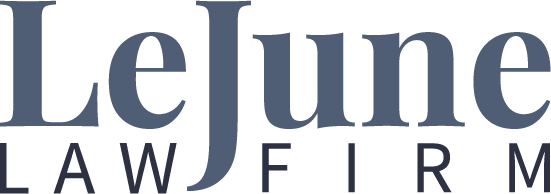Jim Olive has spent the better part of his career stepping onto helicopters with a camera and gyro-stabilizer in hand, fighting against gravity to get that slow-shutter shot of his signature nighttime skyline.
His fifty-year experience as a seasoned photographer specializing in aerial and skyline photos has secured him assignments in more than 90 countries, but it’s Olive’s Houston photos that capture the attention of companies across the city.
One photo’s use in particular has now embroiled Olive and the University of Houston in a copyright lawsuit that poses a question for artists everywhere: Do state rights trump individuals’ rights to their intellectual property?
“It’s interesting because that picture happens to be one of the most popular pictures of our skyline, even though it’s an older one,” Olive said. “People infringe on that picture considerably just because there’s none out there like it. There’s quite a bit of effort put into these type of shots, so it’s not something a neophyte can just go up and do.”
Olive’s company, Stockyard Photos, provides professional images for digital and print use, but he encountered so many stolen images that he hired a copyright infringement identification service called Image Rights.
Early last year, Olive was sifting through the flagged usages Image Rights sent him when he discovered UH was one of the infringers. They were not able to provide a license for his photo’s use.
After Olive looked into the issue further, he found that the University used the photo in web and print advertisements for an extended period of time. He also discovered his watermark had been removed from the bottom of the photo. Those watermarks are necessary to securing more work, Olive said.
“I sent (UH) a letter and then I get a response that said, ‘You can’t sue us; we have sovereign immunity,’” said Dana Andrew LeJune, Olive’s attorney. “So I sent them a cease-and-desist: stop using it, and we need to have some details about how you used it, how long you used it, what you did with it, and then I come to find out that the image appeared in Forbes magazine via UH.”
Years-long infringement
Around May 2016, Olive was even more disturbed when he realized the photo used in Forbes was stripped of its metadata, and Bauer College of Business was credited instead.
LeJune said whoever sent the photo to Forbes to promote the University’s business school either digitally or manually cut off Olive’s Copyright Management Information from the analogue version of the image, then fraudulently replaced it with its own logo and credit line.
Whoever did that violated the Digital Millennium Copyright Act — a federal statute.
“That deprives me of those eyes,” Olive said. “When (Hurricane) Rita came through, the picture I took ran in three publications all on the same level of Time magazine. Why? Because I was the only guy that had it. Other publications saw it, saw Jim Olive’s name on it.”
LeJune said he when he received a response from Eric Bentley, the University’s attorney on this case, Bentley requested an invoice for what Olive believed he was owed.
According to the letter, once the University evaluated the case, they would consider waiving sovereign immunity, a blanket protection of all state entities against lawsuits. If waived, UH would then consider paying Olive for the image’s repeated use — which Olive traced back four years.
Sovereign debate
LeJune and Olive calculated an amount that captured his loss of business beyond the lost licensing fees of the image, factoring in the roughly two million copies of the published Forbes advertisement — two million “eyes” who might’ve contacted Olive for business.
They counter-demanded $25,000 for each Digital Millennium Copyright Act infringement for removing Olive’s watermark, once for UH’s use and once for Forbes’. LeJune and Olive also tacked on $16,000, plus a tax of $1,320 for UH’s false licensing; in total, they requested $67,320.
“If all an infringer ever had to pay was what he should’ve paid before he infringed, everybody would infringe with impunity,” LeJune said. “There’s no disincentive. We’re letting (UH) off the hook very lightly, to be truthful.”
After The Cougar requested a comment from Bentley for this article, the University’s Director of Media Relations Mike Rosen responded.
“Although this type of claim is barred by sovereign immunity, the University has been diligently working with Mr. Olive’s attorney on a potential settlement that we believe is a fair value for the inadvertent use of this one image,” Rosen said. “We are hopeful that this will be resolved shortly.”
According to sources within the University, the use of Olive’s image was “an inadvertent action on the part of a former employee,” but the University could not immediately confirm whether that employee was fired because of Olive’s lawsuit.
‘Hypocritical’ lawsuits
LeJune intends to appeal to the Texas Legislature to waive the University’s sovereign immunity so he and Olive “can go after UH in an appropriate fashion.” Forbes continues to use Olive’s photo imprinted with Bauer’s credit line, despite LeJune’s request that UH tell the international magazine to cease its use.
Although Olive’s photo was not officially registered as copyrighted content at the time UH used it, LeJune said Olive’s rights are unchanged. Olive has now officially registered all of his content to be copyrighted, lessening the likelihood of this happening again.
“Bauer teaches — hopefully — business ethics, so this should be something that, in my mind, if they saw it, would need to be corrected,” Olive said.
Olive can’t help but juxtapose his lawsuit with UH’s other recent legal battle, their trademark infringement suit over South Texas College of Law’s renaming to “Houston College of Law.” The universities reached a tentative settlement in that case earlier this month, preserving UH’s trademarked name.
“That was hypocritical,” Olive said. “They’re sitting here denying my claim while going after someone else. What does that represent to the students?”


